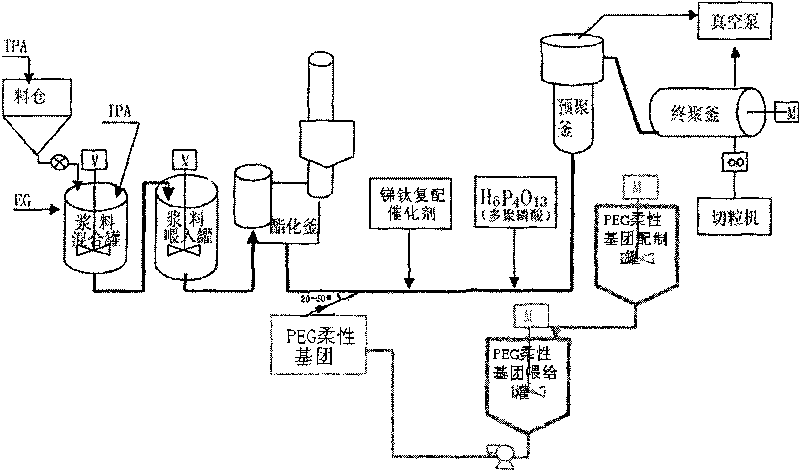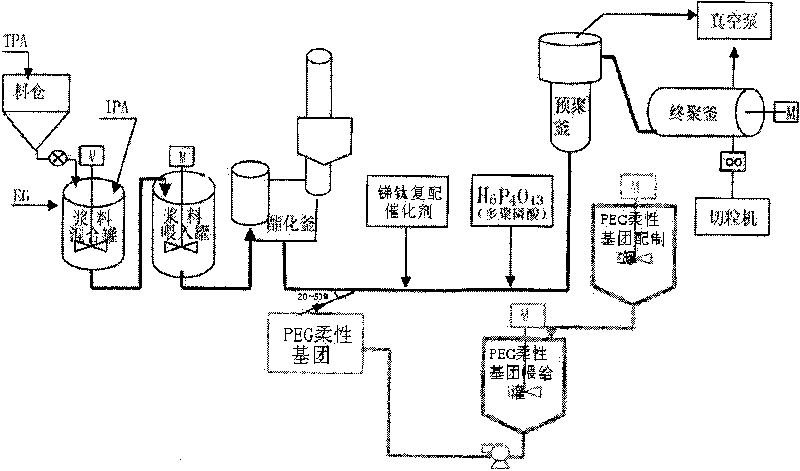Method for preparing high-flexibility PET copolymer used in spun-lace non-woven fabrics
A spunlace non-woven fabric, high flexibility technology, applied in the direction of single-component copolyester artificial filament, etc., to achieve the effect of tight combination, shortened reaction time, and improved environmental protection
- Summary
- Abstract
- Description
- Claims
- Application Information
AI Technical Summary
Problems solved by technology
Method used
Image
Examples
Embodiment
[0030] Embodiment: PEG-PET (PEG molecular weight is 400~600)
[0031] 1. Terephthalic acid, isophthalic acid and ethylene glycol are stirred in the slurry mixing tank according to the set density or molar ratio (1:0.02~0.05:1~2.2), and pumped into the slurry feeding tank. The slurry feeding tank enters the esterification tank through the slurry injection nozzle, and the slurry is uniformly mixed and reacted through the circulation principle of the thermosiphon or the action of the agitator. The esterified oligomer together with the additives on the pipeline through the gear pump:
[0032] The catalyst is a composite catalyst of antimony and titanium. It is injected through the additive nozzle. The amount added is based on the content in the polyester chips. The titanium is 10ppm, and the antimony is 8ppm. Polyphosphoric acid is injected through another nozzle. The content of PEG is 12ppm, and the flexible group PEG is injected into another nozzle, and added through an incline...
PUM
 Login to View More
Login to View More Abstract
Description
Claims
Application Information
 Login to View More
Login to View More - R&D
- Intellectual Property
- Life Sciences
- Materials
- Tech Scout
- Unparalleled Data Quality
- Higher Quality Content
- 60% Fewer Hallucinations
Browse by: Latest US Patents, China's latest patents, Technical Efficacy Thesaurus, Application Domain, Technology Topic, Popular Technical Reports.
© 2025 PatSnap. All rights reserved.Legal|Privacy policy|Modern Slavery Act Transparency Statement|Sitemap|About US| Contact US: help@patsnap.com


